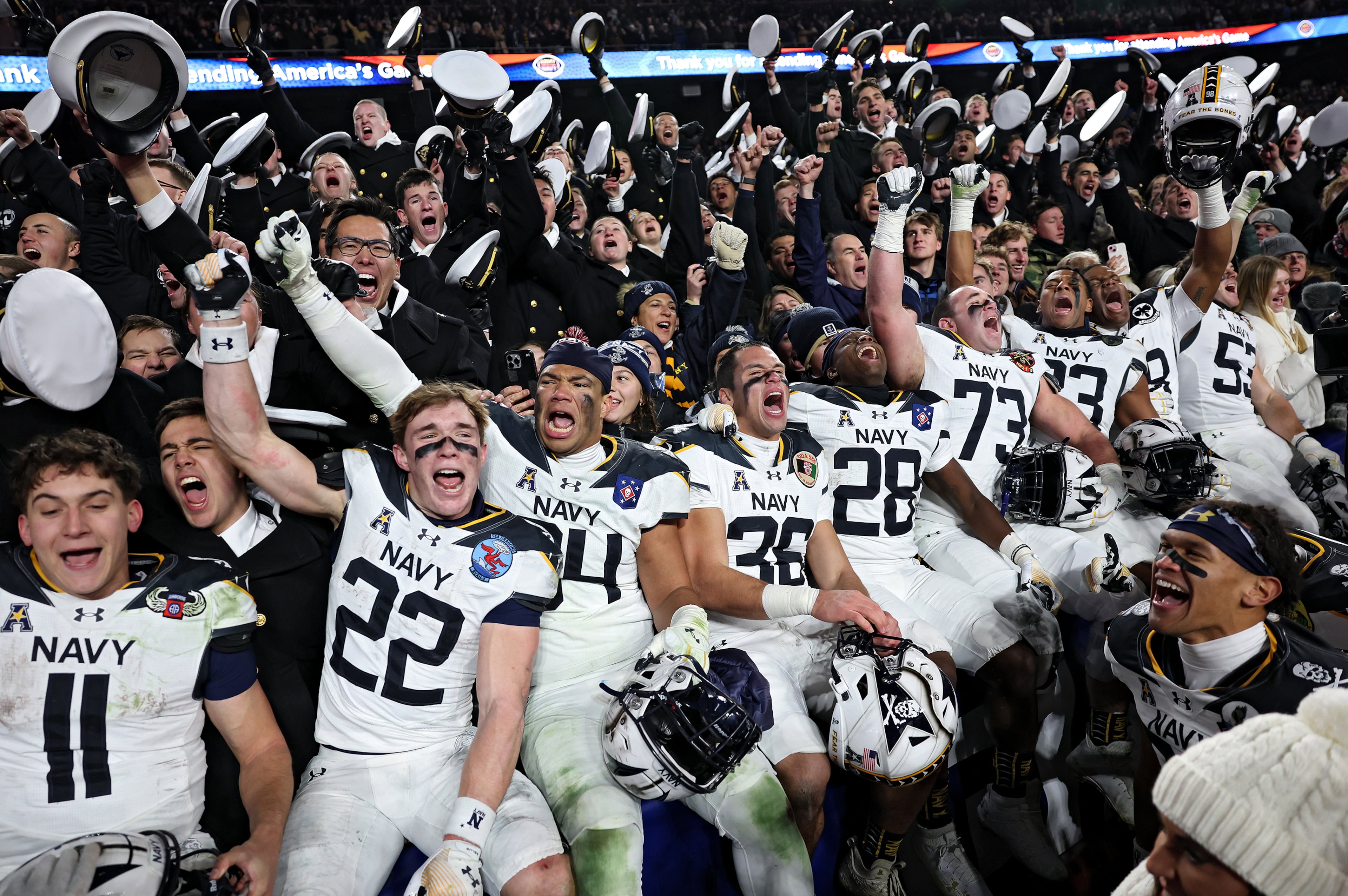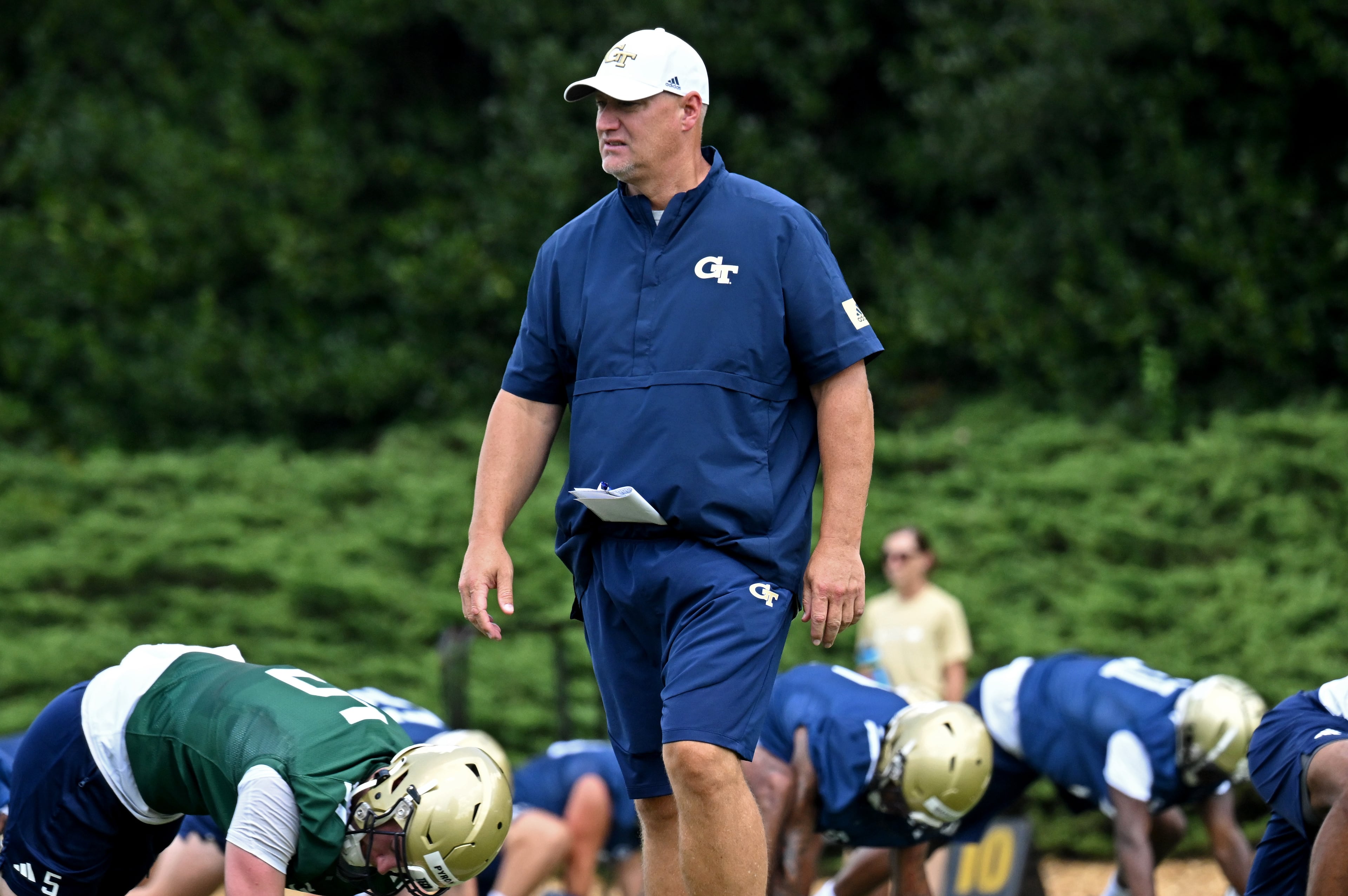J Batt’s departure for Michigan State reinforces Big Ten, SEC’s power
As word spread Sunday of J Batt’s hire away from Georgia Tech to Michigan State, a particular sentiment was exchanged among donors to the institute, many of whom had gotten to know the athletic director well in his 2½ years.
They were not surprised he left for another opportunity. Batt is a rising star, had performed his job at Tech well and didn’t figure to spend the rest of his career as chief Yellow Jacket.
Unexpected, though, was that the destination was Michigan State, a move first reported Sunday by ESPN and MSU announced Monday.
It had been thought that, when Batt eventually jumped, it would be to Alabama (where he had been the deputy AD before leaving for Tech) or North Carolina (his alma mater). Having grown up in Virginia, attended North Carolina and worked at schools on the Eastern Seaboard and South, there was no clear connection to the Big Ten school or the Midwest.
The same response circulated among Batt’s college athletics administration peers.
“On the surface, it doesn’t make sense — a Southern guy going to Michigan State,” an athletic administrator at a power-conference school told The Atlanta Journal-Constitution. “I think it’s more of a conference (move) than anything. … I just think now the Big Ten and SEC have the upper hand from a resource standpoint.”
There probably is more to his decision. For all we know, Batt’s favorite color is green and his favorite basketball player is Magic Johnson. But a desire to earn a significantly larger salary (which ESPN reported he will after earning $979,000 annually at Tech) and to be at a school whose conference makes gobs of money and has a clearer future is easily understood.
The Big Ten always has been a leading conference. Quite coincidentally, this isn’t even the first time a Tech AD has left for Michigan State. Doug Weaver blazed the Atlanta-East Lansing trail in 1979.
But the gap between the Big Ten and SEC and the rest of college athletics is widening, and Batt’s decision to leave Tech less than three years into a job he did not seem eager to leave would seem to be another indication of it.
The ongoing negotiations over the format of the expanded College Football Playoff explain it succinctly. The Big Ten in particular has pushed a model in which it and the SEC both receive four automatic spots into the expanded field (likely 16 teams) while the Big 12 and the ACC get two each.
Historically supplying the tournament with the most teams and the largest fan bases (read: viewing audiences), the two conferences will receive 58% of CFP revenue over the six-year, $7.8 billion deal with ESPN that begins in 2026, according to Yahoo Sports’ Ross Dellenger.
The ACC and Big 12 will split 32%, and the remainder will go to Notre Dame and Group of Five schools.
Consider that, in the previous CFP contract, the five power conferences (including the Pac-12 before its dissolution) split 80% of the revenue evenly.
That is a massive shift toward the Big Ten and SEC.
Tech has plenty going for it. The football program is on solid ground with coach Brent Key. It is in a vibrant city in a growing part of the country. The fan base has reasonable expectations. The athletic department set a fundraising record in 2024 (thanks in no small part to Batt). Academically, it’s one of the premier schools among power-conference institutions.
It’s in much better shape now than it was when Batt arrived in 2022 with the football program reeling from the failed tenure of coach Geoff Collins, a debacle that swept up AD and Tech alumnus Todd Stansbury with it.
The ACC has its merits, too.
But no one is mistaking the ACC’s positioning and resources with the Big Ten’s, and, correspondingly, Tech’s with Michigan State’s.
It goes a long way to explain Batt’s decision and to reinforce the growing imbalance.
This isn’t new. Tech’s status as a steppingstone has history. Two of Batt’s recent predecessors at Tech, Dan Radakovich and Mike Bobinski, left for bigger jobs: Clemson and Purdue, respectively.
And Tech isn’t alone, either. College athletics is a ladder. If Batt succeeds at Michigan State, chances are a school with even more resources and a bigger name will come after him.
Finding someone of Batt’s caliber — he arguably was the school’s most effective AD since the legendary Homer Rice retired in 1997 — won’t be easy.
The candidates figure to be deputy AD’s at power conference schools and AD’s from smaller conferences. Batt’s deputy, Jon Palumbo, likely will be the interim AD and be considered for the full-time job.
And if the new hire does well, unless he or she has a strong connection to Tech, chances are a Big Ten or SEC school will hire that person away, too.



